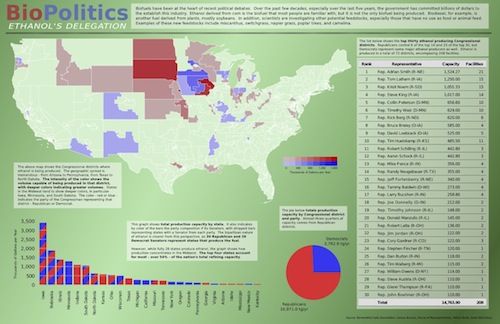Over a year ago I got the impulse to start a blog. As it turned out, it was truly just an impulse because I made only a few posts before I abandoned the effort. But a couple of my posts, which concerned the Levenshtein distance algorithm, got an interesting number of hits. For those who don’t know, the Levenshtein distance algorithm finds the number of edits (i.e., deletions, insertions, and substitutions) needed to turn one string into another. It’s used, for example, in spell checkers and index searching to find near matches. My previous posts were interesting because I listed implementations of the algorithm in Java and Fortran, and the Fortran post got twice the hits of the Java post. I definitely was not expecting that level of interest in what many dismiss as a dead language!
Anyway, below are both implementations for those who care.
Fortran
integer function distance (a,b)
implicit none
! define variables
integer :: len_a, len_b, i, j, cost
character(len=*), intent(in) :: a, b
! matrix for calculating levenshtein distance
integer, dimension(0:len_trim(a), 0:len_trim(b)) :: leven_mat
integer, dimension(3) :: three_vals
len_a = len_trim(a)
len_b = len_trim(b)
do i = 0,len_a
leven_mat(i,0) = i
end do
do j = 0, len_b
leven_mat(0,j) = j
end do
do i = 1, len_a
do j = 1, len_b
if (a(i:i) == b(j:j)) then
cost = 0
else
cost = 1
end if
three_vals(1) = leven_mat(i-1,j) + 1
three_vals(2) = leven_mat(i, j-1) + 1
three_vals(3) = leven_mat(i-1,j-1) + cost
leven_mat(i,j) = minval(three_vals)
end do
end do
distance = int(leven_mat(len_a,len_b))
end function distance
Java
public class Levenshtein {
public static int distance(String wordA, String wordB){
int cost, i, j, min_val;
int[][] leven_matrix = new int[wordA.length() + 1][wordB.length() + 1];
for (i = 0; i <= wordA.length(); i++){
leven_matrix[i][0] = i;
}
for (j = 0; j <= wordB.length(); j++){
leven_matrix[0][j] = j;
}
for (i = 1; i <= wordA.length(); i++){
for (j = 1; j <= wordB.length(); j++){
if (wordA.charAt(i-1) == wordB.charAt(j-1))
cost = 0;
else
cost = 1;
min_val = leven_matrix[i-1][j] + 1;
if (min_val > leven_matrix[i][j-1] + 1)
min_val = leven_matrix[i][j-1] + 1;
if (min_val > leven_matrix[i-1][j-1] + cost)
min_val = leven_matrix[i-1][j-1] + cost;
leven_matrix[i][j] = min_val;
}
}
return leven_matrix[wordA.length()][wordB.length()];
}
}

